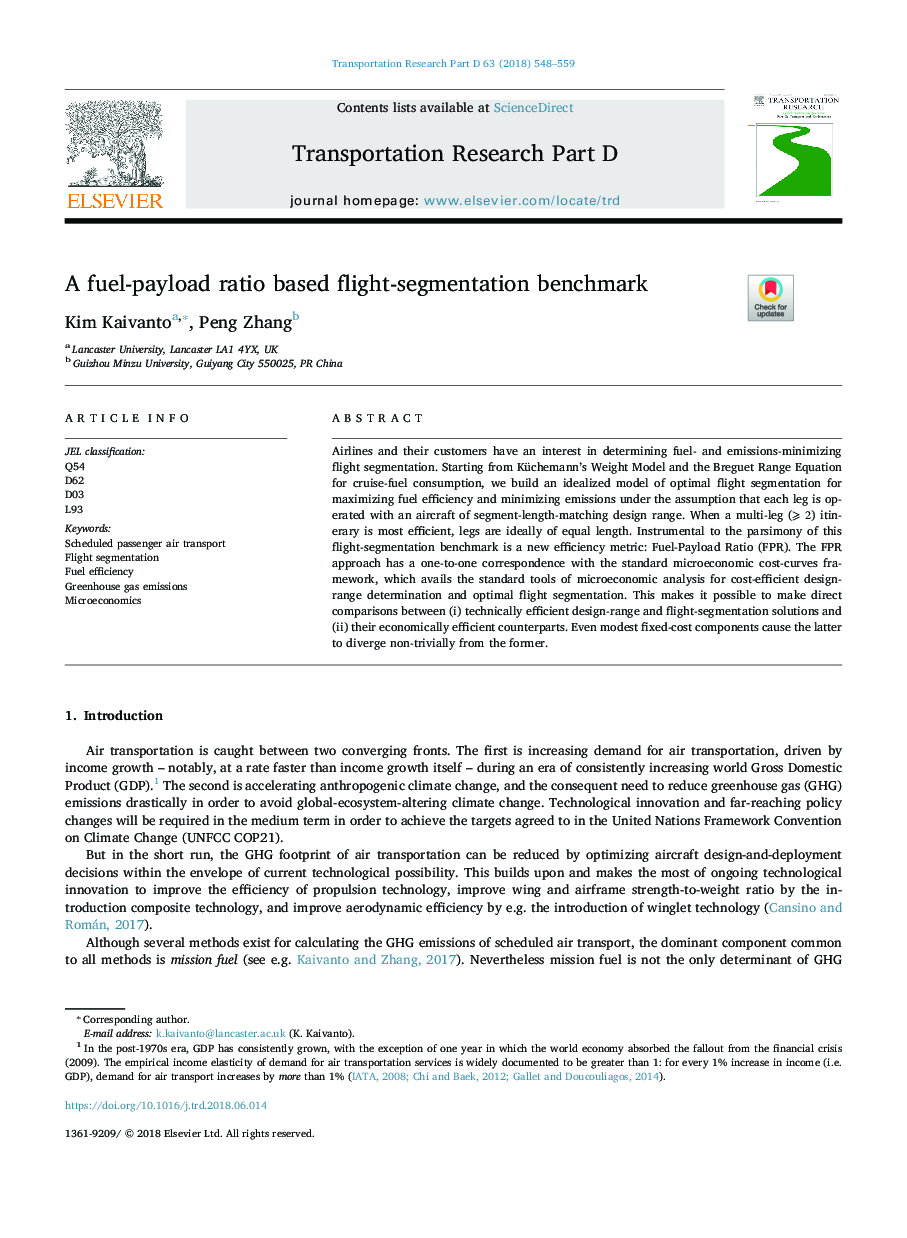| Article ID | Journal | Published Year | Pages | File Type |
|---|---|---|---|---|
| 7498527 | Transportation Research Part D: Transport and Environment | 2018 | 12 Pages |
Abstract
Airlines and their customers have an interest in determining fuel- and emissions-minimizing flight segmentation. Starting from Küchemann's Weight Model and the Breguet Range Equation for cruise-fuel consumption, we build an idealized model of optimal flight segmentation for maximizing fuel efficiency and minimizing emissions under the assumption that each leg is operated with an aircraft of segment-length-matching design range. When a multi-leg (⩾2) itinerary is most efficient, legs are ideally of equal length. Instrumental to the parsimony of this flight-segmentation benchmark is a new efficiency metric: Fuel-Payload Ratio (FPR). The FPR approach has a one-to-one correspondence with the standard microeconomic cost-curves framework, which avails the standard tools of microeconomic analysis for cost-efficient design-range determination and optimal flight segmentation. This makes it possible to make direct comparisons between (i) technically efficient design-range and flight-segmentation solutions and (ii) their economically efficient counterparts. Even modest fixed-cost components cause the latter to diverge non-trivially from the former.
Related Topics
Life Sciences
Environmental Science
Environmental Science (General)
Authors
Kim Kaivanto, Peng Zhang,
